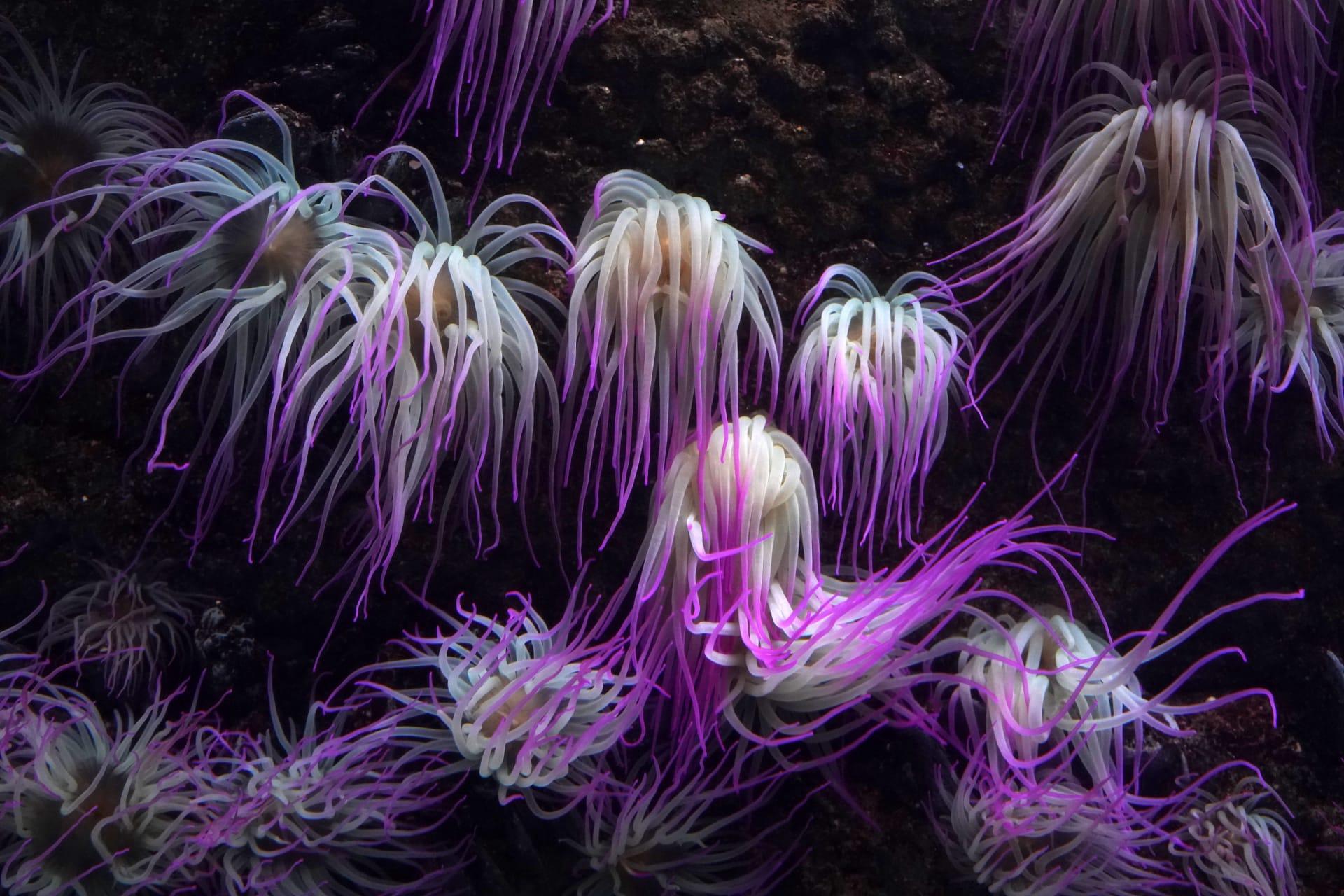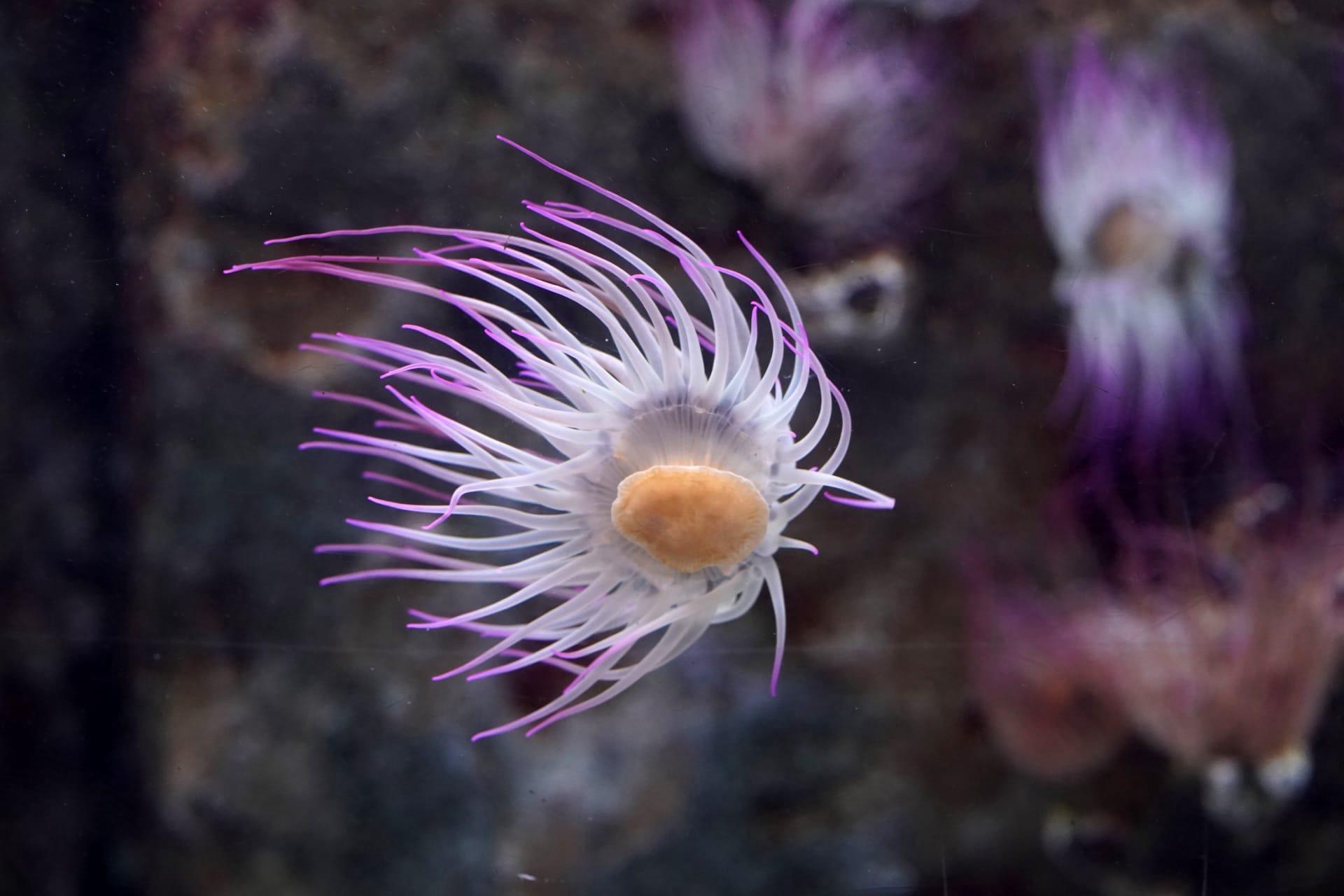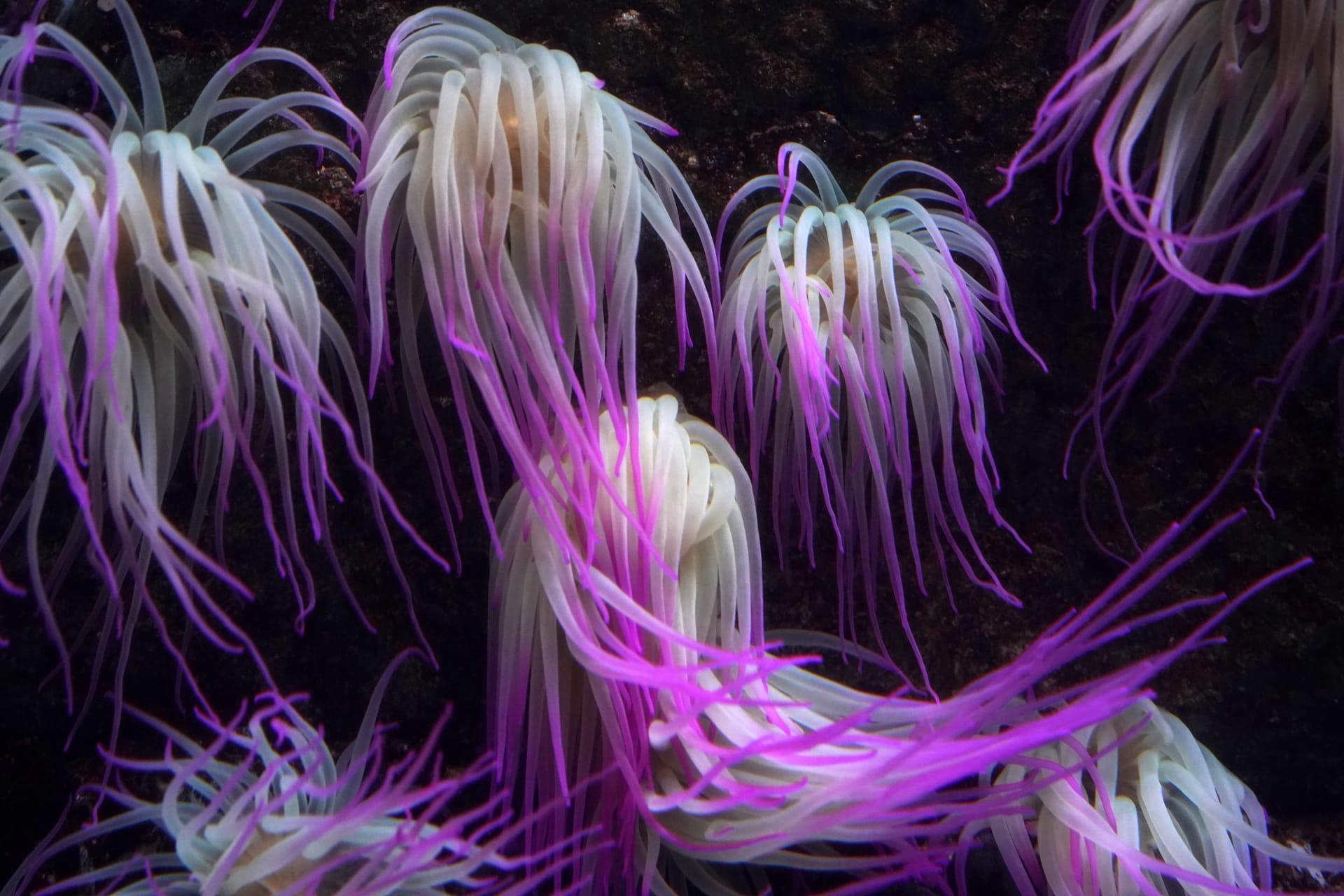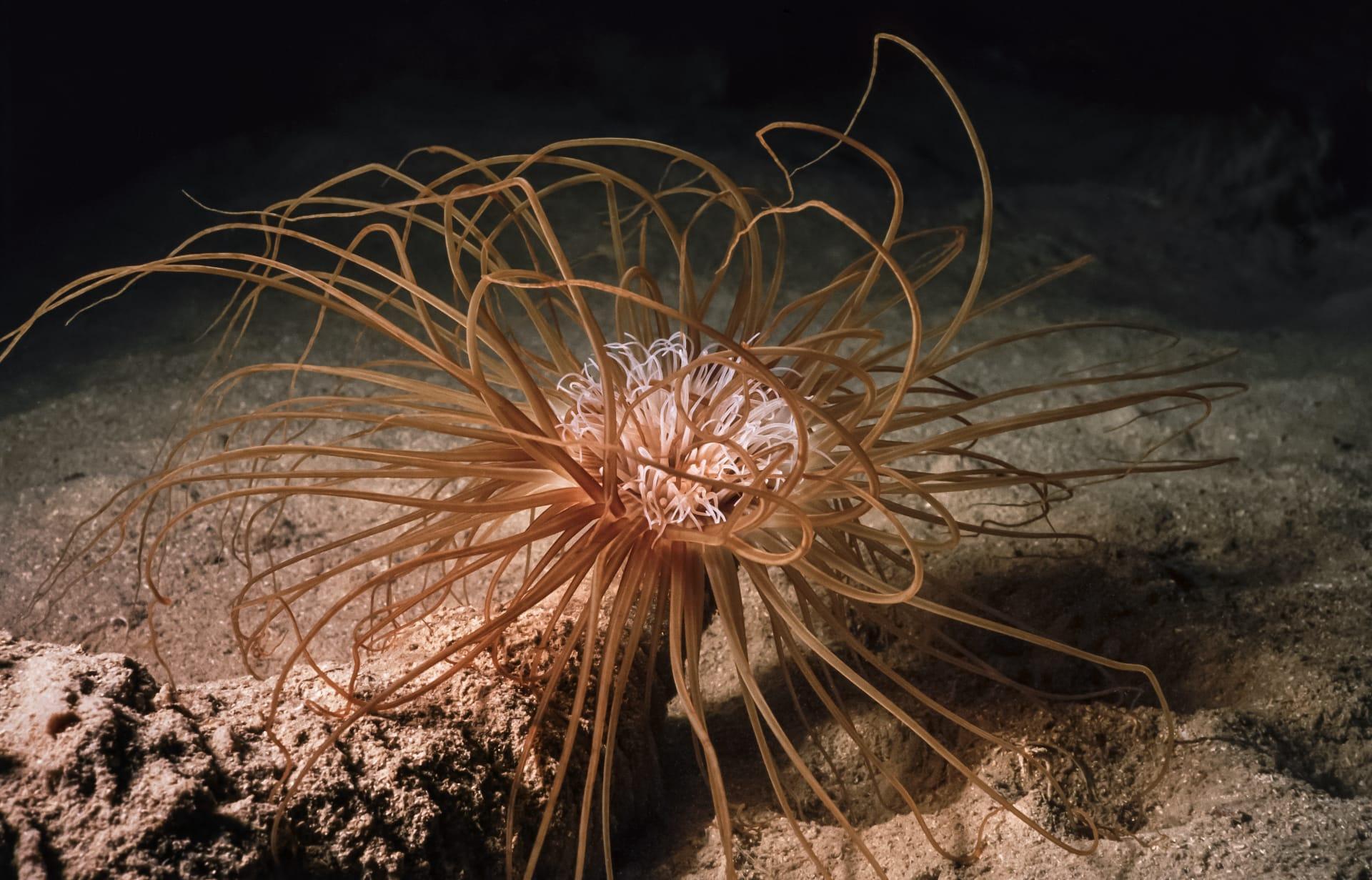1
Tube anemones, or Cerianthids, are a fascinating spectacle in the marine world, often mistaken for their reef-building cousins but belonging to a different subclass entirely. Unlike the stationary sea anemones, tube anemones construct a burrow out of mucus and sediment, creating a durable tube that can extend several feet into the substrate. This tube serves as a protective retreat into which they can withdraw at lightning speed when threatened, showcasing their unique adaptation for survival in the ocean's depths.
One of the most mesmerizing features of tube anemones is their glowing presence in the underwater realm. This bioluminescence is not just for show; it plays a crucial role in their survival. When disturbed, they can emit a ghostly light that may startle predators or attract curious prey, turning the tables in the dark ocean waters. This light show is made possible by specialized cells that react to physical disturbance or chemical signals, illuminating the anemone's surroundings with bursts of light that can vary in color and intensity.

2
The feeding mechanism of tube anemones is a sophisticated display of form and function. Equipped with two sets of tentacles, they present a dual approach to capturing food. The outer, longer tentacles are laced with stinging cells called nematocysts, which paralyze prey that ventures too close. Meanwhile, the shorter, inner tentacles are more delicate and maneuverable, adept at transferring the immobilized prey to the anemone's central mouth. This efficient two-step process allows tube anemones to feed on a variety of small fish and plankton, sustaining their energy needs in the competitive marine ecosystem.
Tube anemones exhibit a remarkable range of colors, from vibrant pinks and purples to subtle shades of blue and green. This dazzling array is not just for aesthetics; the pigments in their tentacles can absorb and reflect different wavelengths of light, aiding in camouflage and perhaps in communication with other marine life. The exact purpose of this kaleidoscope of colors remains a topic of scientific curiosity, suggesting that there is much more to learn about these enigmatic creatures and their interactions with their environment.

3
Reproduction among tube anemones is a fascinating affair, showcasing the diversity of life strategies in the marine world. They can reproduce both sexually and asexually, ensuring their survival across various conditions. In sexual reproduction, they release sperm and eggs into the water, where fertilization occurs, giving rise to free-swimming larvae that eventually settle and form new tubes. Asexually, they can regenerate from fragments of their bodies, a process that allows a single individual to spawn multiple clones of itself, thus colonizing an area more effectively.
Tube anemones have an unusually long lifespan compared to many marine invertebrates, with some individuals living for decades. This longevity is partly due to their sedentary lifestyle and protective tube, which shields them from many predators and harsh environmental conditions. Their ability to retract completely into their burrow at the first sign of danger minimizes threats and contributes to their prolonged survival, making them ancient residents of the ocean floor.

4
The habitat of tube anemones is as varied as their color palette, spanning from shallow tidal zones to the deep sea. They prefer sandy or muddy substrates where they can anchor their tubes securely. This adaptability allows them to inhabit a range of oceanic environments, from tropical coral reefs to cold, dark depths where light is scarce. Their presence in diverse habitats underscores their ability to thrive in varying conditions and their role in the marine ecosystem as both predator and prey.
Despite their delicate appearance, tube anemones have few natural predators, a testament to their effective defense mechanisms. Their stinging tentacles provide a formidable barrier against most would-be attackers. Moreover, their ability to swiftly retract into their protective tube makes them an elusive target. This combination of offense and defense allows them to maintain a relatively safe existence in the often perilous underwater world, focusing their energy on feeding and growth rather than constant vigilance against threats.

5
Tube anemones play a crucial role in the nutrient cycle of their marine ecosystems. By feeding on small particles and plankton, they help control the population of these organisms and break down materials into forms that can be used by other marine life. Their waste products, in turn, contribute to the nutrient-rich sediments that support a diversity of life forms, from bacteria to larger animals. This recycling of nutrients is essential for the health and sustainability of their underwater communities.
The study of tube anemones has contributed to our understanding of evolutionary biology and the complexity of marine life. Their distinct characteristics and survival strategies offer insights into the adaptability and resilience of life forms under the sea. Scientists continue to explore the genetic makeup, reproductive habits, and ecological roles of tube anemones, uncovering the intricate connections that sustain the balance of marine ecosystems and highlighting the importance of preserving these underwater wonders for future generations.